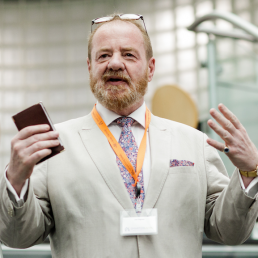The Smart City Expo World Congress in Barcelona had over 25k delegates and was the biggest it has ever been so the question we need to ask is why? The Congress has always been the Cathedral to Smart Cities attracting a dedicated flock of the converted. Having been 10 times, I have to count myself a cult member, but this year’s event had a new sense of excitement, purpose, energy and maturity.
As I navigated the labyrinth of stands like a lab rat, across two enormous halls to get to meetings, I felt I deserved a cube of sugar for arriving on time. In the past, there has been vendor fatigue with City Hall’s inability to provide a consistent customer or the longevity of power to realize the Smart City dream so what has changed?
Like the Barcelona Sagrada Familia, Smart Cities is still a work in progress but the organizers of SCEWC have often been ‘the one-eyed man in the land of the blind’ and realized that the vision of smart cities requires more than technology vendors and the new ‘Smart’ is ‘Sustainable’. This requires better coordination between new vertical industry partners.
This was evident as the event had three themes running concurrently; smart cities, the built environment and the blue economy. This in turn meant a much larger turnout of Technology vendors, Architectural, Engineering and Construction and Commercial Real Estate Companies and IFI’s like UN-Habitat all leveraging the UN’s SDGs as overarching KPIs.
Another factor is that the locus of smart city activity has changed. We used to look to the Far East for inspiration but now that mantle has passed to the middle east and the epicenter is KSA. Saudi now leads the world in vision, ambition, investment and adoption of technology to drive ESG change. They will continue to do so because they are attracting the best global talent in the arena as they have the ability to execute plus they have the most important physical and societal experiment in the world in NEOM supported by a host of other developments like Diriyah and Al-Ula.
An example of the blurring of industry verticals and the new partner ecosystems responding to changes in the market is the concept of River Cities.
The premise is simple, you cannot imagine London without the Thames or Paris without the Seine and many cities owe their existence to the proximity of a river. However, in recent times we have separated the development of a river from the built environment of the city. We have an opportunity to maximize the river asset and add value through what we have learned in the smart city arena and leveraging rapidly maturing technology such as digital twins, AI, Edge and IoT for both the natural and built environment.

I had the opportunity at the Congress to show examples in India, France and Korea of where water management and the built environment can be instrumented in concert to provide a safer environment and rebuild the sense of place.
The above requires a rethink for both vendors and City authorities. Currently, water management and the built environment are siloed in both. The new outcome led tenders coming out from the public sector will require greater horizontal value propositions from vendors partnering across verticals.
In conclusion, we have had many false dawns in the smart city market but the expo showed by understanding the horizontal nature of the arena, it’s back, on steroids.

